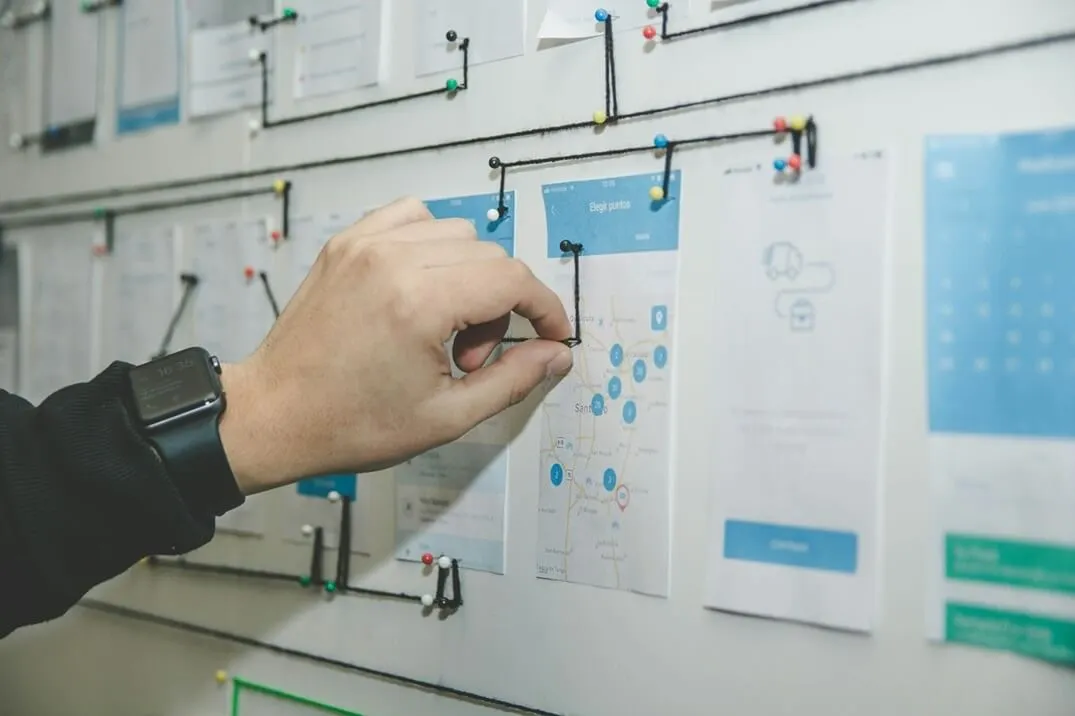Originally published June 10, 2025 , updated on July 23, 2025
We all know that content is the backbone of any successful marketing strategy. But when it comes to enterprises, the game changes. You’re not just creating blog posts or social media captions; you’re building a scalable enterprise content marketing machine that aligns with business goals, supports multiple teams, and drives measurable ROI.
Creating a scalable enterprise content strategy requires more than just a content calendar and a few enterprise content writers. It demands structure, tools, talent, and most importantly, a strategic mindset.
If you’re looking for extra guidance on how to achieve sustainable results and business growth, this is the guide for you. Below, we will guide you through the process of building a robust and scalable strategy, drawing on insights from top enterprise content writing services and copywriting agencies.
Why Scalability Matters in Enterprise Content Strategy

At the enterprise level, content demands expand far beyond what most small to mid-sized businesses face. Here’s why:
- Volume and Velocity: Enterprises must produce large volumes of content quickly. Launching a product globally? You need synchronized campaigns across different time zones and languages. Scalability ensures you can move fast without sacrificing quality.
- Brand Consistency: With multiple contributors and agencies involved, keeping your messaging, tone, and style consistent is challenging. A scalable approach includes governance structures like editorial guidelines and brand voice documents to maintain brand integrity.
- Cross-Team Collaboration: Content often needs input from product, legal, design, and executive teams. A scalable model incorporates systems that streamline collaboration and feedback loops.
- Content Lifecycle Management: Content must be updated, repurposed, localized, and sometimes retired. A scalable content strategy includes mechanisms for regularly auditing and managing content libraries.
- Personalization and Localization: Modern enterprise content must be personalized for user segments and localized for global markets. Scalability allows you to use technology (like AI and automation) to create targeted content experiences at scale.
- Measurable Business Impact: Scaling doesn’t just mean more content — it means more strategic content. Aligning content output with data-driven insights and business goals through a scalable strategy will turn content into a key growth lever.
Ultimately, scalability in an enterprise content strategy is a competitive advantage. The enterprises that get it right can move faster, respond to market changes more effectively, and maintain brand leadership across platforms and borders.
Here is how to craft a scalable content marketing strategy for your enterprise business.
Step 1: Define Clear Business Goals and KPIs
Before producing a single piece of content, align on the big picture. Content marketing at the enterprise level should never happen in a vacuum. It must be anchored in broader organizational objectives that justify the investment in time, talent, and technology.
Start by involving key stakeholders from marketing, sales, customer success, and even the C-suite to understand overarching company goals. Is your enterprise focused on market expansion, customer retention, or increasing product adoption? Each of these will require different content strategies, so being clear on your objective is critical.
Once the goals are clear, define specific Key Performance Indicators (KPIs) that will act as your success benchmarks. These KPIs should be SMART (Specific, Measurable, Achievable, Relevant, and Time-bound).
Sample KPIs Aligned with Business Goals:
- Grow organic traffic by 40% over 12 months
- Achieve a 10% increase in content-assisted conversions
- Improve blog engagement (time on page, scroll depth) by 20%
Step 2: Know Your Audience Deeply
You can’t scale content effectively without deeply understanding your audience. In the enterprise context, buyers are often part of complex decision-making units. Unlike SMBs, enterprise purchases involve multiple stakeholders, longer sales cycles, and more nuanced buyer journeys. To create an enterprise content strategy that resonates and scales, you need to move beyond surface-level demographics and into psychographics.
Start by segmenting your audience on multiple dimensions such as industry verticals, company size and revenue, job roles and decision-making influence, and geographic regions. Consider the customer lifecycle stages, including awareness, consideration, decision, adoption, and retention. Each segment will have distinct pain points, priorities, and preferred communication styles.
From here, develop solid, data-driven buyer personas. These should evolve based on new research, market shifts, and analytics. A strong enterprise persona includes pain points, goals, buying triggers, objections, content preferences, and key influencers. Knowing these details helps create content that directly addresses your audience’s needs.
Above all, prioritize empathy and value. Don’t just sell — solve real problems. Demonstrate that you understand your audience’s world and reinforce that understanding with use cases and thought leadership. This human-centric approach builds trust and engagement.
Step 3: Build a Cross-Functional Content Team
Enterprise content isn’t created in a vacuum. It requires collaboration across departments like marketing, sales, product, customer success, and compliance.
Here are the key roles:
- Enterprise content writer: Specializes in long-form, authoritative, and SEO-optimized content.
- Editor: Maintains tone, style, and accuracy.
- SEO specialist: Ensures content ranks well.
- Content strategist: Aligns content with business goals and audience needs.
- Project manager: Keeps timelines and processes in check.
Outsourcing to an enterprise content writing service or partnering with an enterprise copywriting agency can help you access specialized skills without bloating your internal team.
Step 4: Create a Documented Enterprise Content Strategy
Document everything. According to the Content Marketing Institute, marketers with a documented strategy are more likely to be successful. Your enterprise content strategy should clearly outline your mission statement, the core content pillars and themes that will guide your messaging, and the buyer personas you aim to serve. It should also define the distribution channels you plan to use to amplify your content, and the specific content types you’ll prioritize, such as blogs, videos, case studies, and eBooks.
In addition, a solid strategy must include your SEO plan, the governance and approval workflows that will ensure consistency and compliance, and the performance metrics and reporting cadence that will keep your strategy accountable. This comprehensive blueprint ensures that everyone involved is aligned on goals and execution standards.
Step 5: Use the Right Technology Stack
Technology is your friend, and when building a scalable enterprise content strategy, it’s an indispensable ally. A successful content operation at scale relies heavily on the smart use of automation, seamless integration across platforms, and robust analytics that provide actionable insights.
The foundation begins with choosing the right Content Management System (CMS), such as WordPress, Contentful, or Adobe Experience Manager. These allow for centralized content creation, editing, publishing, and version control across global teams. Effective project management tools like Asana, Trello, or Monday.com keep everyone aligned on timelines, responsibilities, and deliverables, while also streamlining feedback loops and cross-functional collaboration.
When it comes to visibility and reach, SEO tools like SEMrush, Ahrefs, or Clearscope empower teams to perform keyword research, optimize content for discoverability, and analyze competitive positioning. These insights directly feed into smarter content planning.
On the measurement front, analytics platforms such as Google Analytics or Adobe Analytics help monitor performance metrics like traffic, conversions, bounce rates, and user behavior, allowing you to fine-tune strategy based on real-time data.
Together, these enterprise-grade tools create a powerful, interconnected ecosystem that reduces manual errors, fosters efficient collaboration, and delivers the visibility needed to make strategic decisions at scale.
Step 6: Establish a Content Production Workflow
A well-defined workflow eliminates bottlenecks and promotes quality control.
Typical workflow stages are as follows:
- Ideation: Brainstorm ideas based on personas, keywords, and goals.
- Approval: Secure buy-in from key stakeholders.
- Creation: Assign work to your enterprise content writers.
- Review: Edits for clarity, tone, and brand compliance.
- SEO Optimization: Final keyword tweaks and metadata.
- Publishing: Push content live via CMS.
- Promotion: Distribute through email, social, and paid media.
- Measurement: Analyze performance and iterate.
Having this structured workflow ensures that content creation doesn’t fall apart at scale.

Step 7: Prioritize SEO and Content Governance
In enterprise content strategy, SEO is foundational to discoverability and long-term content ROI. Below are a few key features relevant to creating a successful enterprise SEO strategy.
Leverage Internal Linking and Competitive Insights
Develop internal linking frameworks that guide users naturally through your site while distributing authority across key pages. A well-structured linking strategy enhances user experience while improving crawlability for search engines.
Conduct competitor gap analysis to identify content opportunities where your rivals are ranking and you’re not. This helps you prioritize high-impact topics and formats that fill visibility and conversion gaps in your funnel.
Use Structured Data and Schema Markup
Don’t overlook structured data and schema markup. These technical enhancements help search engines understand your content contextually and can improve your chances of landing rich results, like featured snippets or knowledge panels. These on-page enhancements support SEO objectives while improving accessibility and user experience.
Implement Strong Content Governance
SEO alone isn’t enough. Without content governance, even the most optimized content will falter. Governance ensures consistency in tone, quality, and legal compliance across all content assets. Your enterprise content writers should start by creating a comprehensive style guide that defines your brand voice, grammar conventions, formatting rules, and accessibility standards.
Streamline Approval Workflows and Reviews
Establish clear approval protocols so legal and executive stakeholders can review content efficiently without causing bottlenecks. Set up recurring review cycles to audit live content for accuracy, freshness, and alignment with evolving brand standards. These checkpoints protect your brand and make scaling easier.
Work with Enterprise Content Experts
Engaging an enterprise copywriting agency can be a game-changer here. They bring external expertise in codifying these governance and SEO practices into scalable, repeatable workflows, ensuring your enterprise content not only ranks but also resonates and complies across all markets.
Step 8: Localize and Personalize at Scale
Enterprises often serve global and diverse audiences, and as such, a one-size-fits-all content approach simply won’t suffice. To drive engagement and build meaningful connections, your messaging must be adapted through two key strategies: localization and personalization.
While distinct in focus, both are essential in modern enterprise content marketing. Here’s what they mean:
- Localization involves more than just translating your content. It’s about adapting your messaging to reflect regional languages, idioms, regulatory requirements, and cultural norms. It also includes aligning visuals, case studies, and calls-to-action with local expectations. For example, an infographic created for a US audience may need to be redesigned with local symbols and metrics for an audience in Japan. A truly localized piece of content feels native to the market it targets and demonstrates respect and understanding, which in turn drives relevance, trust, and conversions.
- Personalization focuses on delivering content tailored to individual user profiles. This includes using behavioral data, demographic info, job roles, and buyer journey stages to serve more relevant messaging. With the help of marketing automation platforms like HubSpot or Marketo, enterprises can dynamically adjust website content, email messaging, and resource recommendations. For instance, a finance director at an enterprise will have vastly different needs than a mid-level marketing specialist, and your content should reflect that distinction.
- Combined Impact: When localization and personalization are used together, the results can be transformative. Not only do audiences feel understood on a cultural and individual level, but content becomes more actionable. This dual strategy enhances user experience, boosts loyalty, and reduces churn. With the right tools and planning, both tactics can be implemented at scale, solidifying their place as core pillars of an effective enterprise content strategy.
Step 9: Audit, Optimize, and Repurpose
Scalability isn’t just about creating more content — it’s about doing more with what you have.
Regular content audits help:
- Identify outdated or underperforming assets
- Merge or refresh existing content
- Discover repurposing opportunities (e.g., turning a whitepaper into a webinar)
Use audit insights to improve your enterprise content strategy continually. Analyzing performance data from existing assets can help you identify which pieces need updates, consolidation, or retirement. Audits also uncover content gaps and reveal opportunities to expand high-performing pieces into new formats like videos or podcasts, increasing their ROI and reach.

How To Conduct a Content Audit
Start by creating a full inventory of your existing content assets using a tool like Screaming Frog, SEMrush, or your CMS export. Categorize the content by format (blogs, whitepapers, videos), funnel stage, target audience, and publication date.
Then, evaluate each piece for relevance, performance (traffic, backlinks, conversions), and alignment with current messaging. Flag anything outdated or underperforming for revision or removal. Identify top-performing assets that can be updated or repurposed across formats.
Document your findings and create a prioritized action plan to refresh, merge, delete, or re-promote content. Schedule audits quarterly or biannually to maintain content health and alignment.
Step 10: Measure and Scale What Works
What gets measured gets managed. In enterprise content strategy, your analytics must drive decision-making. Begin by tracking performance across content topics, formats, and funnel stages to identify what resonates with your audience.
Monitor conversion rates for individual assets like case studies or white papers, and evaluate engagement metrics such as shares, time on page, and click-through rates across various channels. These insights allow you to invest more in high-performing content while retiring or revising what’s not working.
To scale successfully, create a template from the winning format and develop editorial playbooks that guide your team and partners in replicating proven strategies.
Final Thoughts
A scalable enterprise content strategy is not a luxury for businesses — it’s a necessity. With rising competition and audience expectations, brands that fail to build efficient content engines risk falling behind.
Partnering with an experienced enterprise content writing service or a trusted enterprise copywriting agency can give you the edge in producing high-quality, consistent, and high-performing content at scale. With the right framework, people, and mindset, your enterprise can turn content marketing into a powerful growth driver that scales with your business.
Remember: strategy first, tools second, execution always.
Need help building your scalable enterprise content strategy? Our team of expert enterprise content writers and strategists is ready to help. Contact us today to learn more about our specialized enterprise content writing services.
Post Views: 658


















